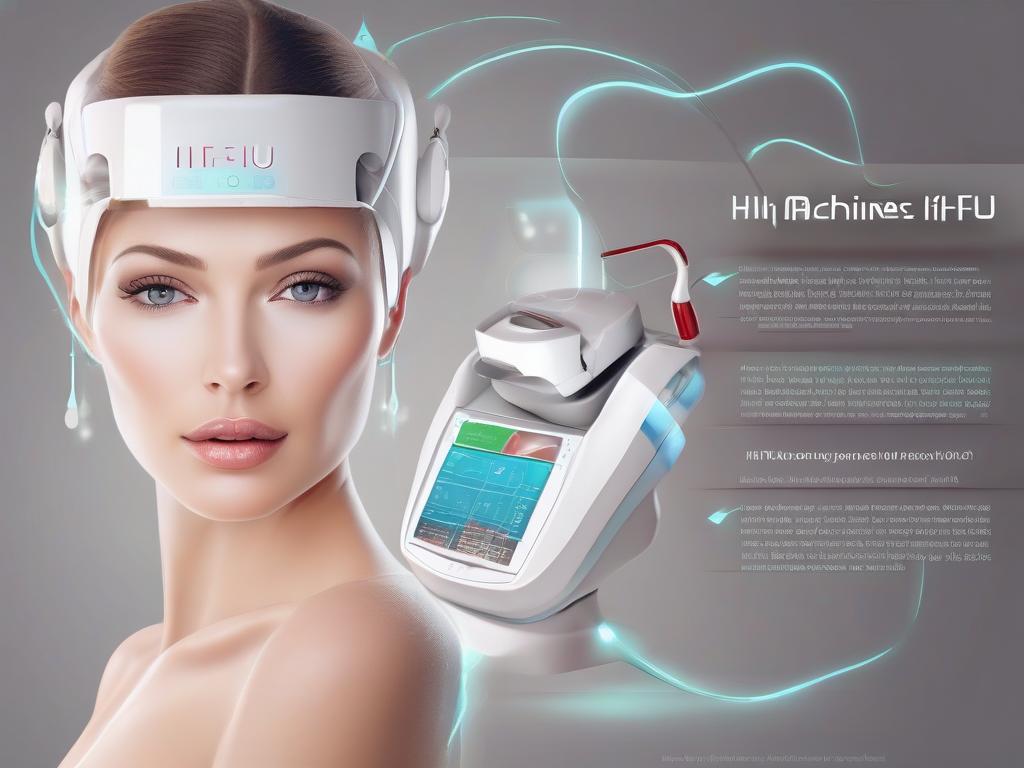HIFU Machine: Non-Surgical Skin Tightening Explained
Table of Contents
What is a HIFU Machine?
Imagine sitting in a dermatologist’s office, and instead of being prepped for surgery, you’re handed what looks like a futuristic wand. That’s a HIFU machine—High-Intensity Focused Ultrasound—a revolutionary device for non-surgical skin tightening.
The Science Behind HIFU
HIFU uses focused ultrasound energy to target deep layers of the skin (the SMAS layer—the same one surgeons lift during facelifts) without cutting or damaging the surface. The heat stimulates collagen production, which tightens skin over time.
Who Invented HIFU?
Originally developed for tumor treatment, HIFU was adapted for cosmetic use in the early 2000s. The first FDA clearance for skin lifting came in 2009.
| HIFU Milestones | Year |
|---|---|
| First medical use (tumor treatment) | 1940s |
| First cosmetic application | 2008 |
| FDA clearance for brow lifting | 2009 |
How Does HIFU Work for Skin Tightening?
Let’s break it down step by step:
The Treatment Process
- Consultation: A practitioner assesses your skin and maps treatment areas.
- Preparation: Your skin is cleaned, and ultrasound gel is applied.
- Energy Delivery: The HIFU device delivers focused ultrasound at 65-75°C to targeted depths.
- Collagen Stimulation: The heat creates micro-injuries that trigger natural collagen rebuilding.
Depth Matters
Different probes target different layers:
| Depth | Targeted Area | Effect |
|---|---|---|
| 1.5mm | Dermis | Fine lines |
| 3.0mm | SMAS layer | Lifting |
| 4.5mm | Deep fascia | Jawline definition |
Watch this HIFU treatment demonstration to see it in action.
Benefits of HIFU Treatment
Why are people choosing HIFU over surgery? Here’s what makes it special:
Non-Invasive Advantage
- No incisions or scars
- No general anesthesia
- Minimal downtime (usually 24 hours)
Long-Lasting Results
Unlike temporary fillers, HIFU stimulates your body’s natural collagen. Most patients see:
| Time After Treatment | Visible Effects |
|---|---|
| Immediately | Mild redness |
| 2-4 weeks | Initial tightening |
| 3-6 months | Full results |
Risks and Side Effects
While generally safe, HIFU isn’t risk-free. Here’s what you should know:
Temporary Side Effects
- Redness (lasts 1-2 hours)
- Swelling (24-48 hours)
- Tingling sensation
Who Should Avoid HIFU?
Not ideal for:
- Pregnant women
- People with active skin infections
- Those with severe sagging (may need surgery)
HIFU vs. Other Skin Tightening Treatments
| Treatment | Invasiveness | Downtime | Results Duration |
|---|---|---|---|
| HIFU | Non-invasive | 0-1 day | 1-2 years |
| Facelift | Surgical | 2-4 weeks | 5-10 years |
| Radiofrequency | Non-invasive | 0 days | 6-12 months |
What to Expect During a HIFU Session
Here’s a typical experience:
Before Treatment
- Avoid sun exposure for 2 weeks
- No retinoids 3 days prior
- Arrive with clean, makeup-free skin
During Treatment
Most patients describe it as:
- Brief discomfort (like tiny electric pulses)
- Cooling gel minimizes heat sensation
- Session lasts 30-90 minutes depending on area
Ready to explore HIFU treatments? Visit our store for professional HIFU machines
Frequently Asked Questions
How many HIFU treatments do I need?
Most patients achieve optimal results with 1-3 sessions spaced 4-6 weeks apart.
Does HIFU hurt?
Discomfort varies. Many describe it as brief pinpricks with occasional warmth. Topical numbing cream can be used.
When will I see results?
Initial tightening appears in 2-4 weeks, with full results developing over 3-6 months as collagen rebuilds.
Is HIFU safe for all skin types?
Yes, HIFU works on all skin tones because it doesn’t target pigment (unlike lasers).
Can HIFU replace a facelift?
For mild-moderate sagging, yes. Severe laxity may still require surgical lifting.

